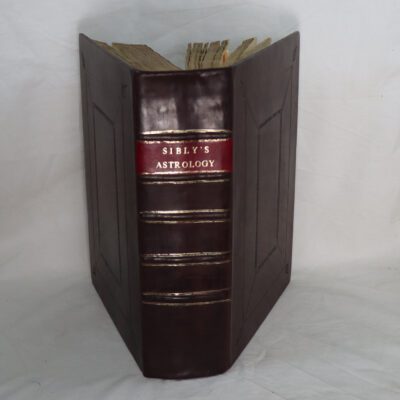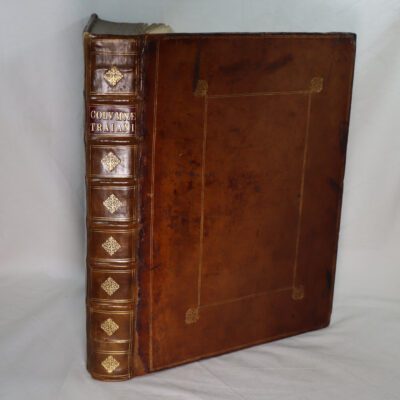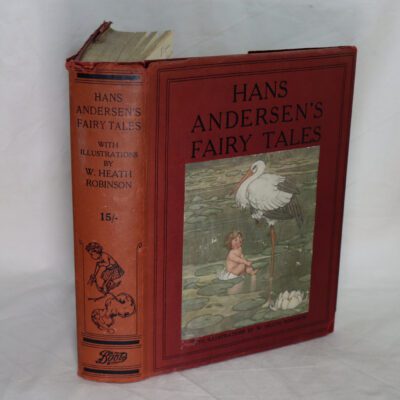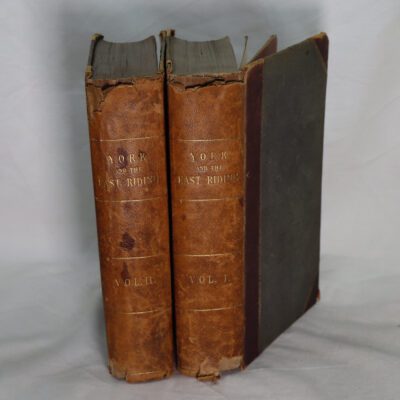The Peace Egg.
By Juliana Horatia Ewing
Printed: Circa 1880
Publisher: Society for Promoting Christian Knowledge. London
| Dimensions | 16 × 21 × 1 cm |
|---|---|
| Language |
Language: English
Size (cminches): 16 x 21 x 1
Condition: Very good (See explanation of ratings)
Item information
Description
Tan Board binding with Brown title and etching on a child sitting on father’s knee.
-
F.B.A. provides an in-depth photographic presentation of this item to stimulate your feeling and touch. More traditional book descriptions are immediately available.
-
Note: This book carries the £5.00 discount to those that subscribe to the F.B.A. mailing list.
Circa 1880’s. Paper covered card boards, slightly discolored and rubbed to edges. Endpapers discolored, text clean throughout. The title story is a Christmas tale for children and the book includes an additional Christmas Mumming Play to the rear. Delightfully illustrated by Gordon Browne. Good copy only in the original illustrated paper-covered boards. Physical description; Contents; The peace egg: a Christmas tale — The peace egg: a Christmas mumming play. Subjects; Christmas stories. Christmas plays. Mumming plays. Conduct of life ; Juvenile fiction. English literature 19th century. Children’s Literature.
Juliana Horatia Ewing (née Gatty, 3 August 1841 – 13 May 1885) was an English writer of children’s stories. Her writings display a sympathetic insight into children’s lives, an admiration for military matters, and a strong religious faith. Known as Julie, she was the second of ten children of the Rev. Alfred Gatty, Vicar of Ecclesfield in Yorkshire, and Margaret Gatty, who was herself a children’s author. Their children were educated mainly by their mother, but Julie was often the driving force behind their various activities: drama, botany and so on. Later she was responsible for setting up a village library in Ecclesfield, and helped out in the parish with her three sisters. Early stories of hers appeared in Charlotte Mary Yonge’s magazine The Monthly Packet.
On 1 June 1867, Julie married Major Alexander Ewing (1830–1895) of the Army Pay Corps. A musician, composer and translator, he was also a keen churchgoer and shared his wife’s interest in literature. Within a week of their marriage, the Ewings left England for Fredericton, New Brunswick, Canada, where he had received a new posting. They remained there for two years, before returning to England in 1869 and spending eight years in the army town of Aldershot. Although her husband was sent overseas again, to Malta in 1879 and Sri Lanka in 1881, Ewing’s poor health precluded her from accompanying him.
On her husband’s return in 1883, the Ewings moved to Trull, Somerset, and then in 1885 to Bath, in the hopes that the change of air would do her good. However, her health continued to decline. After two operations, she died in Bath on 13 May 1885. She was given a military funeral at Trull three days later.
Julie’s sister Horatia Katharine Frances Gatty (1846–1945) published a memorial of her life and works, which includes a publication history of her stories. A later selection includes some of Julie’s letters and drawings about Canada. A biography of her by Gillian Avery appeared in 1961.
Roger Lancelyn Green calls Ewing’s works the “first outstanding child-novels” in English literature. They show notably sympathetic insight into child life, admiration for things military, and a reflection of Ewing’s strong Anglican faith. They include Mrs. Overtheway’s Remembrances (1869), A Flat Iron for a Farthing (1873), Six to Sixteen (1875), Jackanapes (1884), Daddy Darwin’s Dovecot (1884), and The Story of a Short Life (1885).
A talented artist herself, Ewing’s works were frequently illustrated by such notable figures as George Cruikshank and Randolph Caldecott. She was also the editor of a number of magazines which published short stories for children, such as the Nursery Magazine from 1856 onwards, the Monthly Packet, and the monthly Aunt Judy’s Magazine from 1866.
The Story of a Short Life inspired Grace Kimmins to start the Guild of the Brave Poor Things to help children with disabilities in London. Grace and later Ada Vachell took their motto Laetus sorte mea (Happy in my lot) from Ewing’s book. Her Madam Liberality (1873) has been taken to be autobiographical.
Rudyard Kipling declared he knew Ewing’s novel Jan of the Windmill (1872–1873, 1876) almost by heart. He wrote in his autobiography, Something of Myself: “One [book] I have still, a bound copy of Aunt Judy’s Magazine of the early ‘seventies, in which appeared Mrs. Ewing’s “Six to Sixteen”. I owe more in circuitous ways to that tale than I can tell. I knew it, as I know it still, almost by heart. Here was a history of real people and real things.” Her story The Brownies (1865) gave the Baden-Powells the idea and the name for the junior level of the Girl Guides. Another admirer of her work was E. Nesbit, herself a prominent children’s author. In 1899 a stained-glass window by Charles Eamer Kempe in memory of Alexander and Juliana Horatia Ewing was installed in the Church of All Saints, Trull, overlooking their graves.
Mummers’ plays are folk plays performed by troupes of amateur actors, traditionally all male, known as mummers or guisers (also by local names such as rhymers, pace-eggers, soulers, tipteerers, wrenboys, and galoshins). Historically, mummers’ plays consisted of informal groups of costumed community members that visited from house to house on various holidays. Today the term refers especially to a play in which a number of characters are called on stage, two of whom engage in a combat, the loser being revived by a doctor character. This play is sometimes found associated with a sword dance though both also exist in Britain independently. Mumming spread from the British Isles to a number of former British colonies. It is sometimes performed in the street but more usually during visits to houses and pubs. It is generally performed seasonally or annually, often at Christmas, Easter or on Plough Monday, more rarely on Halloween or All Souls’ Day, and often with a collection of money, in which the practice may be compared with other customs such as those of Halloween, Bonfire Night, wassailing, pace egging and first-footing at new year.
Although the term mummer has been in use since the Middle Ages, no scripts or details survive from that era and the term may have been used loosely to describe performers of several different kinds. The earliest evidence of mummers’ plays as they are known today is from the mid- to late 18th century. Mummers’ plays should not be confused with the earlier mystery plays
Condition notes
Want to know more about this item?

Related products
Share this Page with a friend













